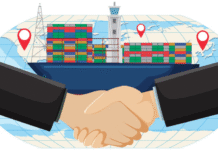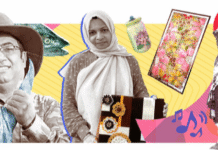Will the metro rail solve Dhaka’s traffic apocalypse?

Hope is high that when Metro Rail Transit (MRT) finally arrives in Dhaka, the capital city’s legendary traffic congestion will ease off. Near Bijoy Sarani or in Mirpur or other places, where the construction of MRT is underway, attractive signposts proclaim: “The dream of MRT will soon become a reality in Dhaka,” “MRT will be the most time-saving way of getting around,” “MRT will be the most cost-effective and environmentally sustainable mode of transportation,” and “With MRT school children will be able to reach their schools on time.” All of these statements are true. But these truths may not solve the actual problem.
The key question before us now is: will the metro rail live up to its promise? Will it mitigate Dhaka’s traffic catastrophe? If it does, wonderful. Money spent well. But if it doesn’t, why? What will have gone wrong? There should be a robust policy conversation on post-MRT Dhaka and its promises and perils. At present, this conversation rarely exists. Everybody seems satisfied with the assumption that the grand transportation solution is coming and urban sanity would finally return to Dhaka streets. There is almost no acknowledgement of other undesirable possibilities. But they should be considered in order to avert them.
Nobody seems to be questioning whether infrastructure, on its own, truly has the capability to be a solution to a problem as socially complex as traffic congestion. The success of an infrastructure like metro rail is also contingent upon a host of other factors: people’s willingness to adapt to a lifestyle based on public transit; affordable train fare; easy accessibility to metro stations; user-friendliness; metro rail’s integration with other modes of transportation and relationship to the city’s land-use pattern; distance between home and train station; transportation options from home to train station; parking options around metro station; pedestrian infrastructure like footpaths leading to metro station; gender sensitivity; and, last but not least, whether the status-conscious middle-class would sacrifice its love of personal cars to embrace mass transit as its mobility choice.
Riding public transit is a lifestyle. This lifestyle develops with a combination of civic culture, social equity, voluntary sacrifice of personal space, community-oriented desire for mobility, and carbon-reducing environmental awareness, among other things.
This lifestyle exists, I think, vigorously in Amsterdam or Oslo. London, Paris, Stockholm, and Singapore are case studies of public transit success in various degrees. Although there have been periodic reports of financial loss, Kolkata metro has played a vital role in creating a culture of mass transit-based urban mobility and reducing traffic congestion in the West Bengal metropolis. My recent experience of visiting Kolkata gives me this impression.
Public transportation does not work well in many American cities, particularly in those where low-density urban sprawl makes mass transit untenable. According to a report, only 4.7 percent of all commuters travelled by mass transportation in the USA in 2000. In Washington, DC, there is a clear class and racial divide in the city’s public bus system. Despite its efficient management and routing, the American capital’s bus transit serves predominantly low-income African Americans.
The UK-based global consultancy Halcrow Group undertook a study on mass rapid transit in 13 developing countries and came to the conclusion that cities in those countries witnessed very little reduction of traffic congestion after the introduction of metro systems. This doesn’t have to be Dhaka’s case. Dhaka could take preemptive measures to put MRT on a path to success.
The city administration’s first step towards this goal should be understanding what the MRT is and what it is not. The MRT cannot be thought of as a one-dimensional infrastructure, unrelated to the social patterns, norms, and cultures of the city and other forms of “soft” infrastructure like footpath or “paratransit” like car pools or shared rides from home to station. Simply building a futuristic metro rail may not solve the road congestion problem. It may well become a glamorous but cost-ineffective concrete serpent hovering over the city. We need to learn from the flyover effectiveness in Dhaka and Chattogram. Are flyovers alleviating traffic congestion in our metropolises?
There should be comprehensive planning in which MRT is seen as one piece of the urban-mobility puzzle. For instance, how are people expected to get to the metro station from their neighbourhoods? Has this been factored into the design and siting of metro stations? How are the metro stations integrated with public and private bus lines? Will there not be traffic congestion around the station during peak hours, in the same way schools create massive traffic clots during morning rush hours? To mitigate this common problem, cities around the world typically seek to cluster high-density housing around transit stops, so that people can simply walk to the metro station, decreasing the reliance on private vehicles. This is the case in New York City, among others. People should have abundant affordable housing options around MRT stations.
Most of all, instead of simply glorifying MRT as the ultimate panacea for the city’s chaos and congestion, there must be robust social campaigns to develop what I would call city-dwellers’ “socio-urban capital,” a combination of behavioural transformation toward civic mindedness, propensity for low-carbon lifestyle, walkability and the public’s willingness to shift from personal automobiles to mass transit. City people’s socio-urban capital can be increased by a combination of social movements, popular advocacy, people-centric urban design (for instance, an integrated footpath system), and a safe, attractive, and accessible public transit. For example, the socio-urban capital of the people of Copenhagen would mean minimisation of the use of personal automobiles and celebration of walkability and “bikability.”
The rising personal vehicle population has been a cause for concern in Dhaka. Nearly 400 motorised vehicles enter Dhaka streets every day. Personal automobiles occupy about 70 percent of the road space while accounting for only 5-8 percent of total daily commuters. This problem will continue to aggravate since people’s pockets are getting deeper and they are willing to ensure personal security and comfort by buying cars. As mushrooming car dealerships in different parts of Dhaka demonstrate, the personal car market is skyrocketing. Many would like to buy personal cars to avoid infernal streets and unsafe public transportation and showcase their upward middle-class trajectory.
Ironically, severe traffic congestion can be a sign of economic prosperity. The question is, would the rising middle-class embrace a mobility lifestyle based on metro transit? It may be entirely possible in Dhaka that MRT will be packed with people, while roads below will be even more congested. This is what happened to Bangkok. Perhaps Dhaka’s most devastating problem is overpopulation. Will the MRT’s success depend on the decentralisation of Dhaka?
A vigorous conversation on post-MRT Dhaka should begin now.
Adnan Zillur Morshed is an architect, architectural historian, and urbanist. He teaches at the Catholic University of America in Washington, and serves as executive director of the Centre of Inclusive Architecture and Urbanism at BRAC University. He is an alumnus of Faujdarhat Cadet College, BUET, and MIT. Email: morshed@cua.edu.
Source: The Daily Star.









